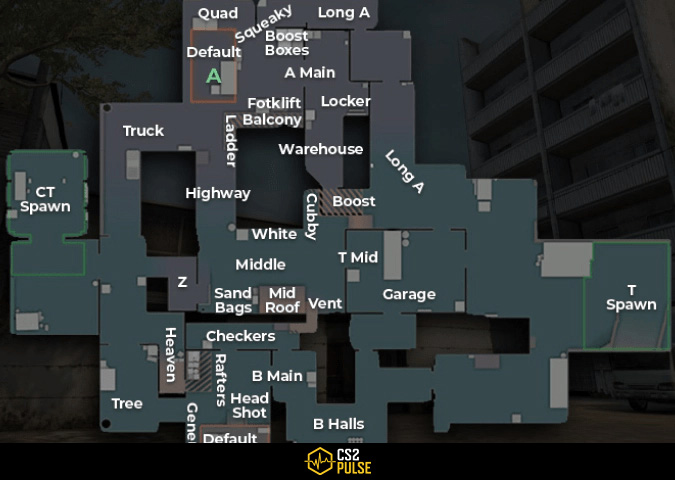Antalya Escapes
Discover the best of Antalya with exclusive insights and tips.
Why CS2 Callouts Are the New Emojis for Gamers
Discover how CS2 callouts are revolutionizing gamer communication, becoming the new emojis! Level up your game with this exciting trend!
How CS2 Callouts are Transforming Communication in Gaming
The introduction of CS2 Callouts is revolutionizing the way players communicate in gaming environments. Callouts, which refer to quick and efficient terms used to relay information about map positions, enemy locations, and strategic plays, have become integral in team-based games like Counter-Strike 2. By standardizing these callouts, players can quickly convey vital information without the need for lengthy explanations. This not only saves time but also minimizes the chances of miscommunication, leading to more coordinated gameplay and ultimately improving overall team performance.
Moreover, the effectiveness of CS2 Callouts extends beyond mere gameplay mechanics. They foster a sense of community among players, enriching social interactions within the game. As gamers adopt these common terminologies, a shared language emerges that enhances collaboration and team spirit. Additionally, organizations and professional teams are beginning to incorporate CS2 Callouts into their training regimes, emphasizing their importance for strategic planning and execution. Therefore, understanding and utilizing CS2 Callouts is becoming essential for anyone serious about excelling in competitive gaming.

Counter-Strike is a highly popular first-person shooter game known for its team-based gameplay and strategic depth. Players engage in various missions, primarily focusing on bomb defusal and hostage rescue scenarios. For those looking to improve their gameplay, understanding csgo terms can be incredibly beneficial, as it provides insight into the game's mechanics and strategies.
The Evolution of Gaming Language: From Emojis to CS2 Callouts
The evolution of gaming language has been nothing short of remarkable, reflecting the rapid advancements in technology and player interaction. In the early days, communication in gaming was primarily restricted to simple emojis and text-based chats, which served as a fundamental way for players to express emotions and reactions. With the advent of online multiplayer games, this primitive mode of communication paved the way for more complex forms of interaction, enabling players to share their experiences and coordinate strategies through phrases and acronyms. As gaming culture grew, so did the lexicon, with terms and symbols creating a shared identity among gamers.
Fast forward to the present, and we find ourselves engrossed in the intricacies of games like Counter-Strike 2 (CS2), where callouts have become an essential part of gameplay. These specific phrases allow players to relay crucial information quickly and efficiently, improving teamwork and strategy implementation. Understanding and using these callouts is vital for success in high-stakes matches, illustrating how gaming language has adapted to meet the demands of an increasingly competitive landscape. This evolution not only enhances the player experience but also signifies the cultural shift within the gaming community as it moves toward a more collaborative and strategic approach to gaming.
Are CS2 Callouts the Future of Expressing Emotion in Gaming?
The emergence of CS2 callouts marks a significant evolution in how players communicate in gaming. With the advent of rapid-fire communication tools allowing players to express emotions and tactics succinctly, these callouts serve as a bridge between gameplay and emotional expression. The ability to convey urgency or tension through a simple phrase or signal can heighten the overall gaming experience, allowing for moments of camaraderie as well as chaos. As gamers increasingly seek immersive experiences, the potential for CS2 callouts to incorporate emotional nuance may redefine player interactions in multiplayer scenarios.
Moreover, as the gaming community continues to grow and diversify, the role of CS2 callouts in expressing emotions is likely to expand further. Not only do these callouts allow for effective communication during gameplay, but they also foster a deeper connection between players, as emotions like excitement, frustration, and triumph can be shared in real-time. This shift towards more dynamic and emotionally charged exchanges can result in richer narratives and stronger bonds within gaming communities. Ultimately, if CS2 callouts become the standard for emotional expression, we may witness a transformative impact on how games are designed and played.